How to create a dynamic brand identity
How to create a dynamic brand identity
- What is a dynamic brand?
- Assemble your "kit of parts"
- Common methods of creating a dynamic brand
- Technology to support dynamic brand identities
- Key takeaways
It's game day, and you flip on the TV to catch your favorite NFL team in action. The announcers are on your screen, running through a roll call of the starting line-ups.
"At offensive tackle, 6 foot 8 and weighing in at 359 pounds, Trent Brown," the announcer rumbles as the camera pans down to the action on the field. The players on screen, these sultans of sport in America's most violent game are...dressed in pink?
Pink socks, pink cleats, pink gloves. You'd be surprised — except you've seen it before. The NFL and its players temporarily adopt the color pink in support of breast cancer awareness month, a move designed to align the NFL with the cause and attract new audiences to the game. It's just one example of the dynamic brand identity that the NFL has created and wielded to its benefit.
In this chapter, we'll show you how to build a similarly flexible brand that retains its identifying attributes.
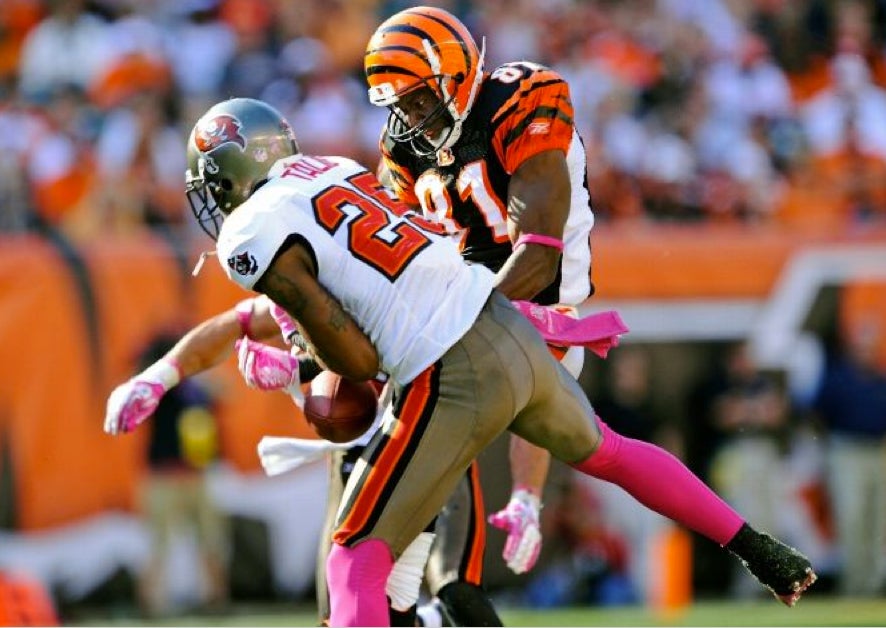
What is a dynamic brand?
Throughout history, most brands have been intentionally static — rigid brand guidelines developed with the goal of strict adherence, leaving little or no room for more flexible expressions of the brand. Often this included a singular mark, or perhaps two variations of a brand's logo intended for use against light or dark backgrounds. The fixed nature of the brand identity, consistently applied, was one of the most significant brand-building tools companies had at their disposal as they sought to create instantly recognizable brands.
But that's all changing now.
To meet the demands of today's world, a brand's identity needs to be flexible enough to adapt for print-based media, digital channels, the physical world (like buildings and billboards), and a global economy. Your brand must be flexible enough to be just as relevant to a consumer riding the subway and looking at an advertisement on their iPhone in Shanghai as one walking the streets and experiencing your brand through a billboard in Times Square. This requires that brand managers learn to create dynamic brand identities: those that can freshen up, personalize, or contextualize their brand without losing sight of its core brand identity.
A dynamic brand is defined as a brand with more energy that can show change, movement and flexibility. Dynamic brands are often called living brands, because they physically change or move, reflecting the very definition of dynamism.
"A dynamic identity is essentially opening up one or more of the components [of a brand] to a dynamic influence," says designer Paul Davis.
While the concept of a dynamic identity may seem straightforward, there are countless ways to bring a dynamic brand to life. Companies are doing everything from temporarily adopting new colors — like the NFL did — to using new technologies to show different advertisements to audiences based on the current weather in their geographic location.
Let's start by looking at how you can break down your brand in a way that helps you make it dynamic.
Assemble your "kit of parts"
In order to start making your brand dynamic, you first need to understand its core identity. You need to understand your brand's values, points of differentiation, and personality. Only once those elements have been identified should you begin assembling your brand's "kit of parts." This is the first step in designing a dynamic brand identity and should contain the following elements:
- A logo and/or mark
- A typographic system
- A color palette
- Guidelines for using icons, photography or illustration
- A methodology of approach
"Liquid identity is the term I use to describe the "kit of parts" that we make to design something," says Paula Scher, Partner at Pentagram. "If you take the notion of how identity was thought of in the Swiss international style there might be a mark or logo, type, and maybe some other trademark issues that were all put together very neatly in a corner. You can't really do that today because information exists in every form of media, so you need to have something that's really more fluid than that.
If you design an identity where the system is very rigid, it becomes boring very quickly and it means that it's likely to be overthrown because people need change. If you want something to last a long time, you need to have the ability for flexibility.
The kit of parts Scher describes brings systemization to a brand, while still allowing for the brand to express itself with a sense of intuitive spirit. Ultimately the kit contains "the things you are doing over and over to identify a place."
Take for example Microsoft, one of Scher's clients at Pentagram. The company's primary competitor, Apple, has long reaped the benefits of having products identified by the same logo, brand colors, and a common naming convention (iPad, iPhone, iTunes, etc). Microsoft, by contrast, was struggling to get "credit" for a laundry list of products that had disparate logos and branding. There was no cohesion or consistent application of brand identity to make the company's products instantly recognizable as belonging to Microsoft.
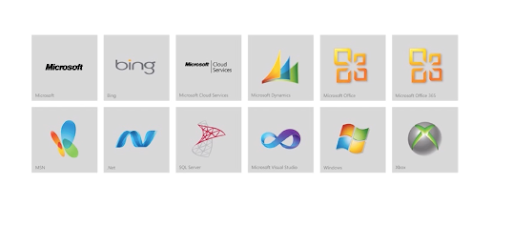
As Scher's team worked to assemble a kit of parts that would make Microsoft's products recognizable, the existing Windows logo was particularly problematic — it was curved (which doesn't make sense for a window), and the four colors used in the logo didn't have any meaning.
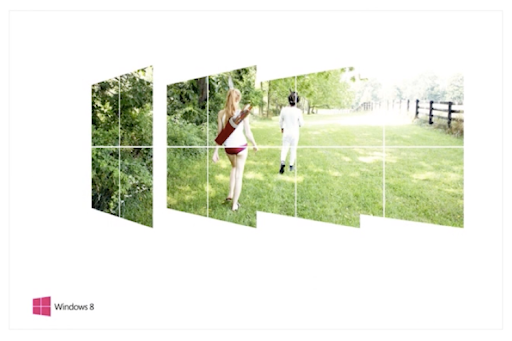
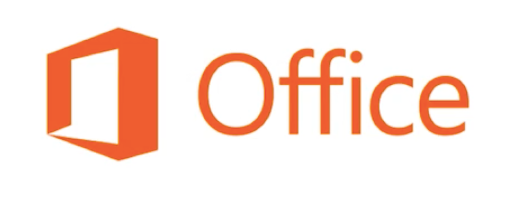
The kit of parts that Scher's team delivered locked in on the idea of a window pane through which you can see the world, a consistent element that unifies each of the products while giving the brand lots of flexibility in its advertising to show different contexts through that window. Note the appearance of the window pane both in the advertisement below for Windows 8, as well as in the new logo for Microsoft's Office product suite.
Next we'll explore a few commonly used tactics that often provide the anchor of consistency for dynamic brands.
Common methods of creating a dynamic brand
While there are many ways to express a liquid identity, we can learn a lot by studying companies that have successfully created dynamic brands. Here are a few of the more common strategies for anchoring your brand in something consistent and recognizable, while maintaining the flexibility to adapt your brand to varying circumstances, events, and audiences.
Containers (dynamic elements within a fixed container)
Many brands looking to create a more flexible identify choose to use their logo or mark within some set of boundaries. While the logo or mark is always present and recognizable, designers are then given the freedom to experiment and create something new within the boundaries of the container. The boundaries themselves and the logo or mark become the identifying aspect of the brand, but everything else is subject to change.
One of the best examples of this approach is Warner Brothers, who since 1923 has been adapting the expression of their logo shown at the beginning of movies to reflect the character of the movie itself.

In the examples above, the general framing of the screen and the WB mark is consistent, but the colors, fonts, and other visual treatments of each are uniquely adapted for each respective movie. The brand expression to the far left, for example, shows snow and icicles accumulating within the logo — this variation was used for the The Polar Express.
Wallpapers (fixed logo or mark, flexible backgrounds)
Using flexible wallpapers or background imagery behind a consistently applied logo or mark is one of the most common ways to create a dynamic brand.
Music streaming service Spotify has recently riffed on this tactic, drawing inspiration from duotone jazz album covers from the 1960s. Spotify wanted a flexible system that allowed them to apply their brand alongside imagery for almost any musical artist. With their duotone wallpapers, they're able to tie together imagery for countless artists despite the fact that they were shot in different styles.
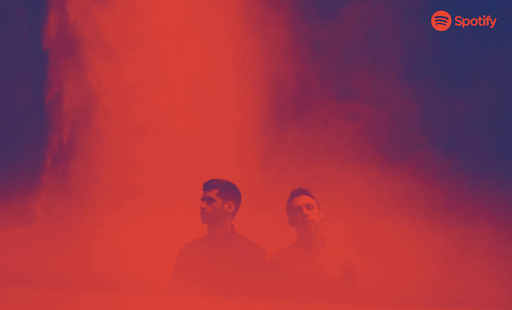
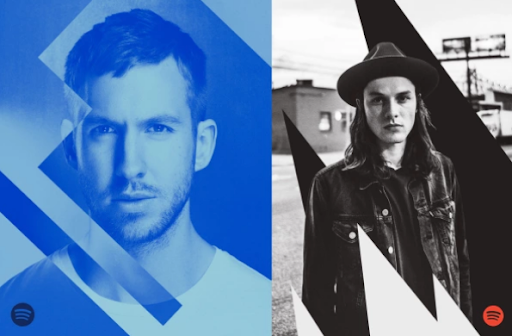
Spotify even created its own software called "The Colorizer" that allows them to easily create brand imagery for any artist using duotone wallpapers. The system has successfully helped the company associate millions of unique artist images with their brand.
Generative content (adaptable to current events)
Adaptations for seasonality, holidays, or other current events — as we saw with the NFL's actions for Breast Cancer Awareness Month — are another way for a brand to be dynamic.
Few brands have employed this strategy more consistently or effectively than Google with their "Google Doodles." Company founders, Larry and Sergey, first altered the Google logo back in 1998, before the company was even incorporated. The duo was attending the Burning Man festival in Nevada, so they updated the company logo to include the festival's stick figure logo behind the second "O" in Google. The move was intended to inform Google users that the founders were out of office for the event — and from there, the idea of altering the company's logo to reflect current events was born.
Two years later, in 2000, Larry and Sergey asked webmaster Dennis Hwang, an intern at the time, to produce an updated Google logo for Bastille Day. Hwang's Bastille Day logo was so well received that Dennis was appointed Google's "Chief Doodler," and doodles became a regular fixture on Google's homepage.
In every instance, the Google wordmark is consistent, with the rest of the logo design adapted to celebrate everything from ice cream sundaes to Senegal's Independence Day. This gives the brand the opportunity to consistently reinvent itself in new and fun ways, while delivering a more meaningful and relevant brand experience to consumers. For example, Senegal's Independence Day is seen by many as a point of national pride; this variation of the Google logo allows Google to celebrate in a small way with its Senegalese users. A full archive of Google Doodles can be found here.
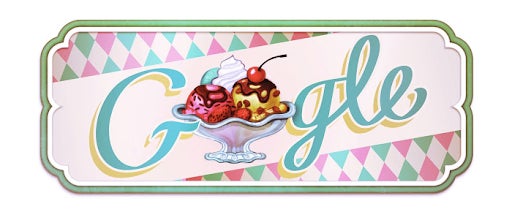
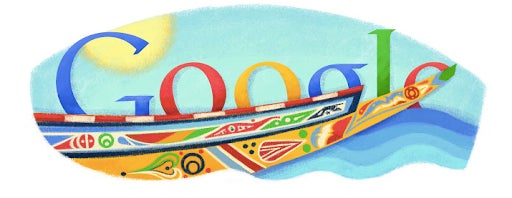
Product customization
Another popular means of creating a dynamic brand identity is allowing customers to customize some aspect of a product or service. Doing so increases feelings of uniqueness and individuality for the consumer, while also fostering the positive associations of brand belonging.
"These days, brands that matter and resonate with people are the ones that feel like they're authentically made and designed just for you," says Tracy Lloyd, Co-founder and Chief Strategy Officer at Emotive Brands.
Nike is one brand using product customization to their advantage. Nike's ID program allows customers to design their own shoes — the famous Nike swoosh being the one non-negotiable element — while the rest of the shoe becomes ownable on an individual level.

Coca-Cola has taken a slightly different approach to product customization, launching their famous "Share a Coke" campaign in 2011. Designed as an effort to reach millenials, Coke began offering bottles that displayed popular first names for the generation on the side of their cans. Over 800 first names were offered, and consumers felt a deeper connection to the brand when they found a can labeled with their name. Coke now offers the ability to customize your own cans at ShareaCoke.com. The depth of this brand connection is evident in customers' willingness to pay five times the normal price of a Coke for their own customized version.
Personalization
Personalization occurs when a dynamic brand uses information about a consumer to deliver a more relevant brand experience. This form of 1-to-1 marketing is typically more effective than traditional advertising, as brands can engage with consumers based on factors like their unique interests, preferences, past behaviors, and geographic location. According to a survey by Infosys, 86% of consumers say that personalization has some impact on what they purchase, and one quarter admit personalization significantly influences their buying decisions. Marketers have taken notice: 56% of marketing leaders increased their personalization spend in 2018.
Uber's new brand is dynamic by design, allowing the brand to tailor itself to provide a more contextually relevant experience to consumers across the globe. The brand's logo, iconography, and composition are very much consistent, but the brand is flexible enough to support the use of location-specific imagery, so that people living in a given area see ads more relevant to their daily lives. For example, a surfer emerging from the water in Southern California might see a billboard like the one shown below.
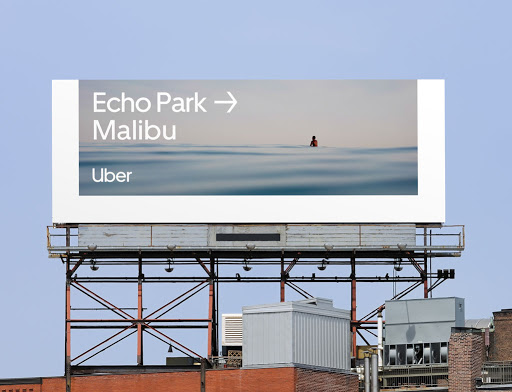
Toyota has taken this concept a step further, creating multiple variations of television commercials promoting their best-selling car, the Camry. Toyota sought to deliver a brand and advertising experience more relevant to consumers based on their ethnicity, filming Camry ads targeting African-American, Hispanic, and Asian-American consumers. The company is then able to provide advertising partners with a full suite of commercials, with the most relevant commercial being aired based on the demographic make-up of the audience for a particular television program. For example, ABC's Scandal has a relatively high percentage of African-American viewers, making that variation of the commercial most likely to air during the show.

This concept can be extended all the way to the individual consumer, too. For example, Target assigns every customer a unique Guest ID number after their first interaction with the brand. The ID is used to track each individual's demographic information, ranging from ethnicity to job history, as well as buying behaviors.
"Once consumers' shopping habits are ingrained, it's incredibly difficult to change them," writes Charles Duhigg in his article How Companies Learn Your Secrets published in The New York Times. That tends to ring true until a major life event takes place that changes consumer behavior &mash; like finding out that you're having a baby. Working with a team of marketing analysts, Target's team was able to build a "pregnancy prediction score" to deliver more relevant advertising and showcase products relevant to expecting mothers.
While brand personalization is proven to influence consumer behavior, delivering this level of personalization comes with a new set of challenges. This likely includes requiring additional creative capacity, increased data management expertise, and use of emerging technologies like artificial intelligence as a delivery engine for personalized advertising at scale.
Let's look at some of the emerging technologies that brand managers can use to help bring dynamic brand identities to life.
Your brand's positioning should not be dynamic
While the strategies outlined above are commonly employed to help make a brand more flexible, one element of your brand that should always remain constant is your brand positioning. You don't want to personalize what your brand stands for or why someone should buy your products. No matter how many different buyer personas you serve, your buyers' motivations for choosing your product over your competitors' are almost always the same.
For example, a shoe company wouldn't want to tell Sally that their new shoe is designed to be worn with dress clothes, while telling Tom that the product is best for long distance running. The elements of your brand identify that can be flexible need to be able to extend your brand in relevant ways without losing sight of your brand's unwavering positioning in the market.
Technology to support dynamic brand identities
With an increasing number of brands looking to create more flexible brand identities, there's been a subsequent rise in technologies that can help deliver this broader array of brand experiences. Here are two of the most promising.
Artificial intelligence (AI)
In Gartner's 2018 Marketing Technology Survey, marketing leaders rated AI as their first choice of emerging technologies that will have the greatest positive impact on marketing over the next five years. AI has already shown results in terms of increasing engagement and conversion rates, which leads to better marketing ROI.
In order to take advantage of AI technology, marketers are beginning to invest in customer data platforms and personalization engines necessary to feed the AI.
For example, TruGreen has been testing AI-generated ads that personalize lawn care tips and recommendations based on weather conditions in the user's geographic area. Using IBM's Watson platform, TruGreen serves ads that leverage images, video, and text adapted to the weather outside. The company then uses chatbots to capture further insights from the consumer, delivering product recommendations specifically tailored to their users' lawn conditions.
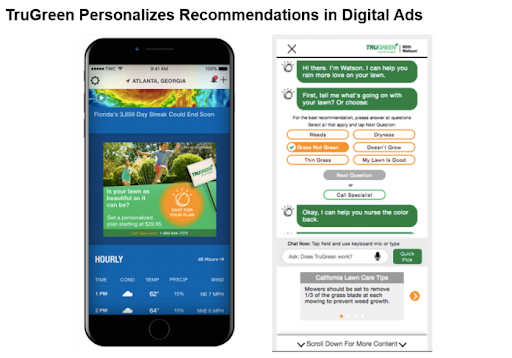
While similar applications of AI show great promise, as an emerging technology, there are some drawbacks. Many modern marketing terms lack the technical or analytical skills (like algorithm development) needed to test and analyze the impact of personalization programs at scale. Additionally, many teams are struggling to produce the volume of content needed to deliver personalized brand experiences; with so many possible permutations, additional creative capacity is a prerequisite.
"I estimate that for mid-market and top global brands the number of creative assets in motion for any given brand is 10 times what it was seven years ago," says Brandfolder CEO Luke Beatty. "This is further complicated by increased omnichannel endpoints like email, social, e-commerce, and other channels."
Digital Asset Management solutions
Digital Asset Management (DAM) solutions like Brandfolder are quickly becoming a key tool for brand managers looking to ensure that their dynamic brand identities are being applied with consistency. As a company's number of internal employees, agencies, and other partners grows, so does the possibility of the brand's identity eroding if brand guidelines aren't followed closely.
DAM solutions allow users to search for a specific brand asset, while providing guidelines around how that asset should be used. Providing this level of regulation is critically important as a brand scales, helping to ensure that assets are being used correctly and consistently while building credibility and trust for the brand.
As we've seen, there are a number of ways to create a more fluid, dynamic brand identity — one that's able to constantly reinvent itself in more personalized and contextually relevant ways. Here's a summary of the most critical points to remember as your brand begins building its own dynamic brand identity.
Key takeaways
- Dynamic brands allow brand managers to consistently reinvent themselves and present fresh and contextually relevant versions of the brand without losing their most identifiable characteristics.
- Brand managers must decide which components of their brand will be dynamic and which components will always remain static. There are a number of common approaches to choose from, but the consistent application of one approach is key.
- Don't try to personalize what your brand stands for or why someone should buy it — these attributes of your brand should remain constant.
- Emerging technologies like artificial intelligence can help deliver more dynamic and personalized brand experiences, but will likely require additional creative capacity and technical skills to leverage successfully.